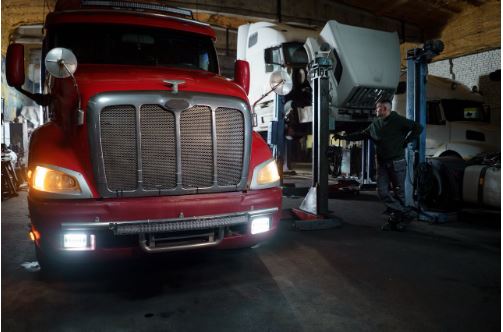
Electronic Logging Devices (ELDs) and Hours of Service (HOS) regulations are crucial aspects of the trucking industry. The Federal Motor Carrier Safety Administration (FMCSA) regulates the trucking industry. If a trucker cannot account for every hour on the road, they face potential fines and can be shut down by the FMCSA.
Trucking companies must keep detailed records of inspections and repairs, and be compliant with FMCSA road safety regulations. ELDs play a crucial role in DOT compliance.
To know what type of ELD devices you need to keep track of your inspections, work hours, and repairs, contact a trucking service company to help you. Here is what you should know about ELD and HOS service regulations.
Electronic Logging Devices
ELDs are electronic devices that record a commercial driver’s Record of Duty Status (RODS) electronically. They have replaced the traditional paper logbooks used to track a driver’s service hours.
Their purpose and design are to improve compliance with HOS regulations, reduce the risk of violations and associated penalties, enhance road safety, and reduce the administrative burden of manual logbooks.
These devices automatically record driving time and other relevant data. As the information is automatically recorded, the likelihood of errors and inaccuracies that can occur when manually filling out logbooks is no longer an issue. This helps ensure that the recorded information is more reliable and accurately reflects the actual service hours.
The devices automatically capture data such as engine hours, miles driven, and location. This eliminates the need for manual calculations and reduces paperwork, saving time for drivers and allowing them to focus more on their driving responsibilities.
Since ELDs provide real-time monitoring and tracking of drivers’ hours of service, they allow fleet managers and dispatchers to have accurate and up-to-date information on drivers’ availability and compliance with HOS regulations. It enables better scheduling and load planning, reducing the likelihood of violations.
The implementation of ELDs has actively improved safety on the roads. By accurately recording driving time and enforcing HOS regulations, they help prevent driver fatigue and promote better sleep and rest patterns. This, in turn, reduces the risk of accidents caused by drowsy or fatigued driving.
As the ELDs store data electronically, the potential for manipulation or tampering is greatly reduced. The recorded data is typically secure and can be easily accessed and reviewed for compliance purposes or in the event of an audit or investigation.
ELD Mandate and Requirements
The FMCSA has mandated the use of ELDs for most commercial motor vehicles (CMVs) involved in interstate commerce since December 8, 2017. However, you cannot simply purchase these devices and continue your trucking operations.
ELDs have specific requirements that must be met. All ELDs must be registered with the FMCSA and certified by a third-party organization. Drivers are responsible for having ELDs correctly installed in their vehicles and must ensure they function properly and are used appropriately to record their service hours. They must also keep supporting documents, such as fuel receipts and delivery records, for log verification.
Hours of Service Regulations
HOS regulations promote road safety and are meant to prevent driver fatigue as they limit the number of hours a commercial driver can work. These regulations apply to CMV drivers operating vehicles over 10,001 pounds, transporting hazardous materials, or carrying more than 8 or 15 passengers. Here are the current HOS regulations:
- 14-Hour rule – Drivers are not allowed to drive or be on duty for more than 14 consecutive hours after coming on duty following ten consecutive hours off duty.
- 11-Hour driving limit – Drivers are prohibited from driving more than 11 hours after ten consecutive hours of driving time
- 30-Minute rest break – Every driver must take a 30-minute break after eight cumulative hours of driving time
- 60/70-Hour limit – A driver cannot drive after being on duty for 60/70 hours in 7/8 consecutive days. Drivers need to take a minimum of 34 consecutive hours off duty to reset the time limit
Exemptions and Exceptions
Despite the HOS regulations, there are exemptions and exceptions in certain cases, such as short-haul drivers, agricultural operations, and specific emergency situations. Short-haul drivers, for example, may not need to take the 30-minute break after eight hours of driving if they meet some of the 150 air mile exemptions.
They can exclude logging their daily hours if they don’t exceed 150 air miles from their starting location, start and end their day at the same location, complete the workday within 14 hours, or engage in ten-hour off-duty periods after each workday.
Short-haul drivers can extend their 14-hour shift limit to 16 hours if they report and end their shift in the same location. However, they cannot use this exemption more than once every six days. When drivers face dangerous weather and adverse driving conditions, they might be exempt from HOS regulations and extend their drive time and daily shift limits to two hours if they were unaware of the adverse driving conditions before starting their trip.


